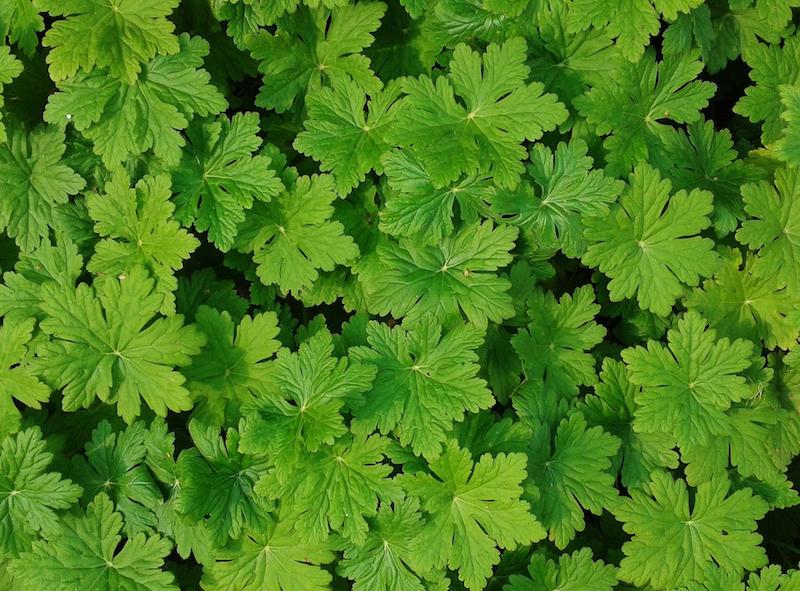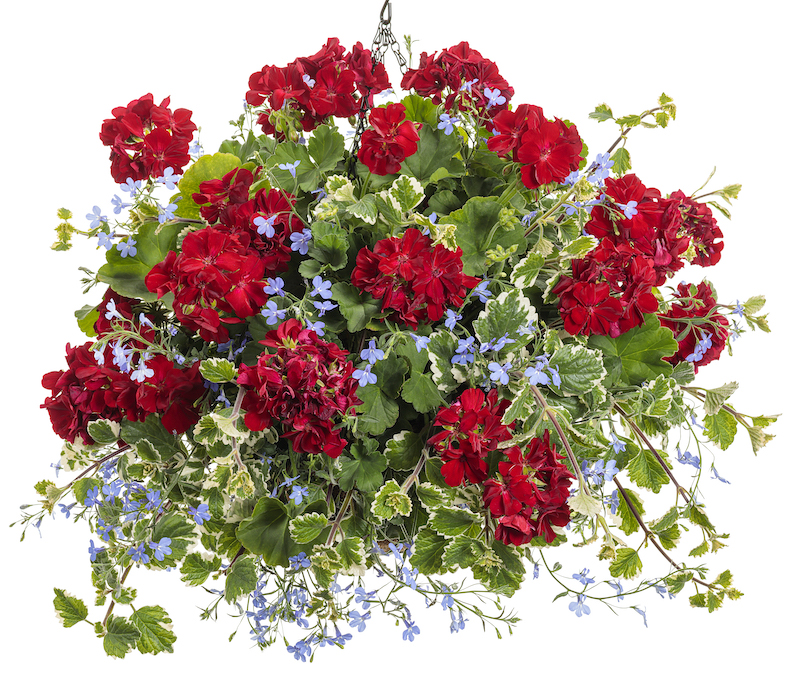Annual geraniums are really not true geraniums and are known as pelargoniums. They will provide an amazing display of blooms all summer long with little maintenance. The main consideration is providing enough sun for these tender perennials to produce continuous flowers. Regular fertilizer high in potash can also boost their bloom potential. If your geraniums are not flowering, the common culprits are lack of sun, cold temperatures, poorly draining soil, or too much nitrogen-rich fertilizer.

True geraniums, known as hardy cranesbill, also have major flower power. They usually bloom from spring to early fall and go dormant in the winter. For best blooming, they need sufficient sunlight (4 - 6 hours/day) and a light shearing in mid-summer. Like their annual counterparts, too much fertilizer can promote lush foliage while stunting blooms.

Common Reasons Why Geranium Isn’t Blooming
Pelargoniums may not bloom well for several reasons: your plant is in too much shade, it was overfertilized, the soil is waterlogged, the stems need pruning, or the temperature has dropped. Pelargoniums need plenty of sunlight, about 6-8 hours a day, to bloom adequately. Check to make sure the sun exposure hasn’t changed from when you first sited the plant due to nearby trees or buildings. Also, the weather can play an important role because geraniums do not bloom well in temperatures under 60 degrees F. Geraniums in containers will need to be repotted each year to provide space for the plant to grow.

Hardy geraniums also need adequate sun exposure, moist, well-draining soil, and a light shearing. These perennials flower best in full sun, at least 4-6 hours a day. Your plant may not bloom at all in soggy, waterlogged soil. If your plant is old, it may need to be divided to allow each clump access to adequate nutrients and moisture. To boost flowering capacity, you can feed with a potash-rich fertilizer or organic compost in the spring.
Pruning Geranium To Help It Bloom
Pelargoniums will reward you with continuous blooms if you trim them and snip off the spent flowers. If you don’t remove the old flower heads, the plant will focus its energy on producing seeds and will stop making new buds. When the flowers start to turn brown, you should snap off the stem just below the joint with your hands or a pair of pruning shears. The joint, also called a node, is a small bump on the stem where a new leaf will grow or is already growing. This light pruning can be done all summer to keep your geraniums tidy and full of blooms.
Hardy geraniums also benefit from light pruning. After the first flush of flowers in the spring, you can cut the plant down by a third, removing spent flowers. This shearing will remove long, leggy stems that have fewer leaves and flowers. The fresh foliage that emerges will be stronger and healthier, supporting the development of new buds.
Fertilizing Geranium To Help It Bloom
Feeding your annual geranium with a slow-release fertilizer or liquid fertilizer high in potassium can help it bloom all summer long. Apply fertilizer every couple of weeks during the growing season, and provide plenty of water to prevent buildup of fertilizer salts. Avoid fertilizers high in nitrogen, which will promote vegetative growth at the expense of flowering. Potassium, on the other hand, boosts flowering by increasing water uptake and helping the plant synthesize the sugars it needs for food.
Hardy geraniums do not need to be fertilized under most conditions. However, if your soil is poor and your plant is not blooming well, you can apply a balanced fertilizer each spring. Avoid fertilizers with a high nitrogen content, and apply soluble fertilizers at half strength to avoid burning the plant. Alternatively, you can top-dress the plant with a high quality compost, which will help condition your soil and slowly release nutrients to the root zone.
Get Geranium To Produce More Blooms
To encourage your pelargonium to produce more blooms, keep it deadheaded all summer. Trim off spent flowers and start feeding the plant every couple weeks with a potassium-based fertilizer. Container plants may need to be repotted if the roots have outgrown the pot or the soil hasn’t been replenished. Too big of a container can stunt flowering while the plant focuses on filling out its roots.
Hardy geraniums will produce more flowers if the plant is cut back after blooming in the summer. You can also promote flowering by feeding the plant in early spring with a well-balanced fertilizer. Old plants should be divided every 3-5 years to rejuvenate clumps and provide enough space for plants to access nutrients from the soil.
Why Geranium Isn’t Blooming
- Too much shade
- Cold temperatures (below 60 F)
- Waterlogged soil
- Spent flowers are going to seed
- Too much nitrogen
- Old plants need to be divided (hardy geraniums)
 |
Author Jessica Mercer - Published 7-04-2022 |
